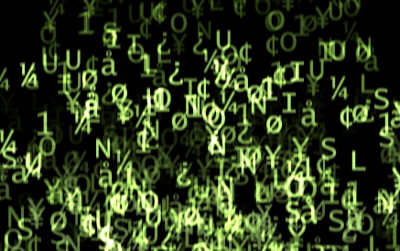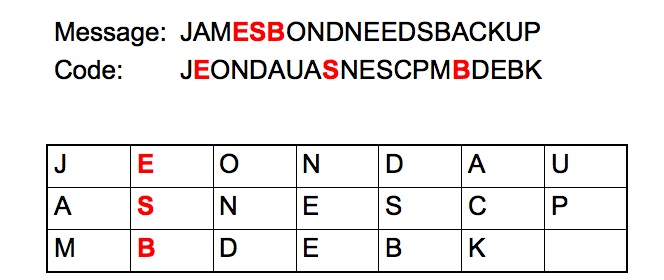A magazine where the digital world meets the real world.
On the web
- Home
- Browse by date
- Browse by topic
- Enter the maze
- Follow our blog
- Follow us on Twitter
- Resources for teachers
- Subscribe
In print
What is cs4fn?
- About us
- Contact us
- Partners
- Privacy and cookies
- Copyright and contributions
- Links to other fun sites
- Complete our questionnaire, give us feedback
Search:
Le Chiffre: The Transposition Cipher

We said ciphers were about scrambling, so the obvious way to encode a message is to do just that, shuffle all the letters around. Suppose the message was written out on Scrabble Tiles, we could just put them in the scrabble bag and pull them out one at a time to give the new version of the message. That would really scramble them. No one would be able to read our message then!
Ahh! That's a problem. We need M at least to be able to unscramble it and get the original message. Perhaps, she is good at anagrams...but then maybe she could come up with lots of different messages from those letters that made sense. How would she know which one we had actually intended?
That is why we need a cipher - a method that scrambles in a way that can be unscrambled just by following a set procedure. If you have the message and know the procedure you can unscramble it...and only M knows the method we use (we hope).
A transposition cipher is just one that scrambles using a method that can be easily unscrambled, but only if you know how. One way is to use a table. You write your message into a table a letter at a time vertically. You then read off the message to send horizontally. You need to agree on the size of the table in advance though. We will use a 7 by 3 table.
Suppose we want to send the message: JAMES BOND NEEDS BACKUP.
First remove the spaces to give message: JAMESBONDNEEDSBACKUP
Next place the letters vertically into the table - so the first column becomes JAM - the first three letters of the message. You end up with the table shown.

Now read off along the rows to give the text to send: JEONDAUASNESCPMBDEBK
Notice all the same letters are there - just in a different order. How does M get the original message back? She just takes an empty 7 by 3 grid and does the opposite to you. She writes the message in along the rows, reading the message off vertically.
Now it's your turn. Bond has just sent the following urgent message. What should you do? Decrypt it yourself then double check you got the same message as M believes he sent.
Watch this space - there are more ciphers to come.
This article is based on the Science Week show given by Chris Harte of the Department of Electronic Engineering, Queen Mary, University of London.


